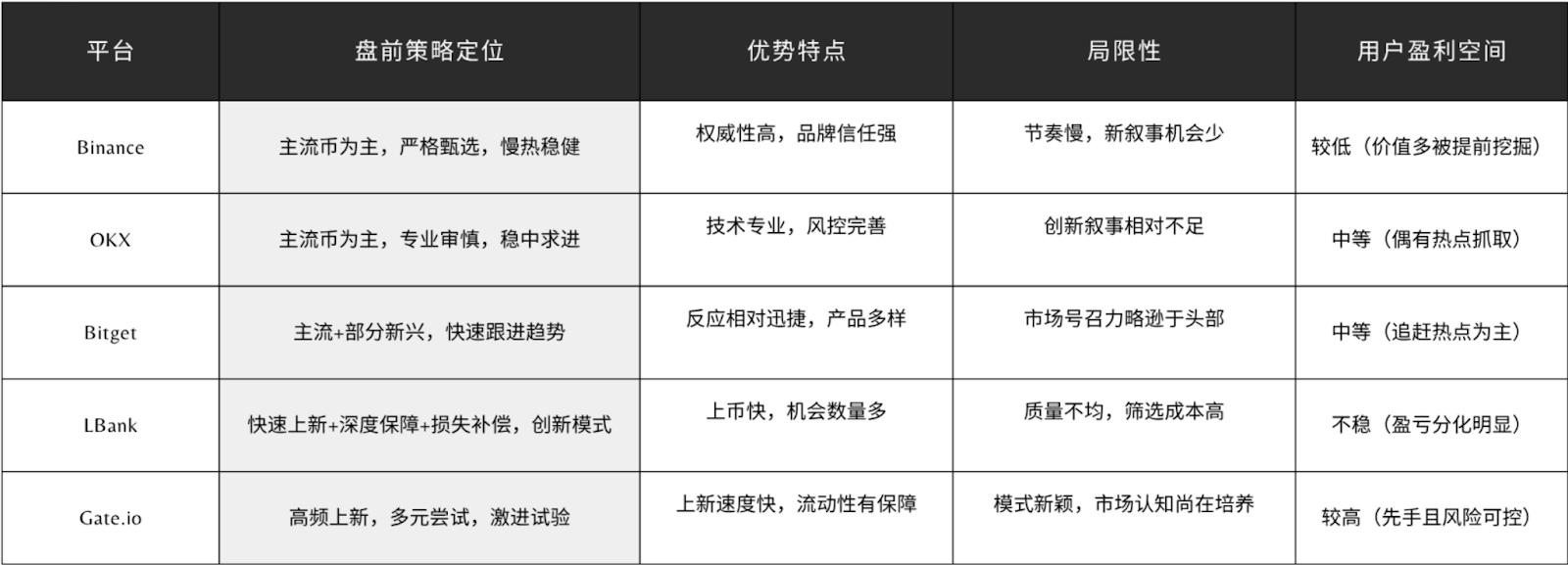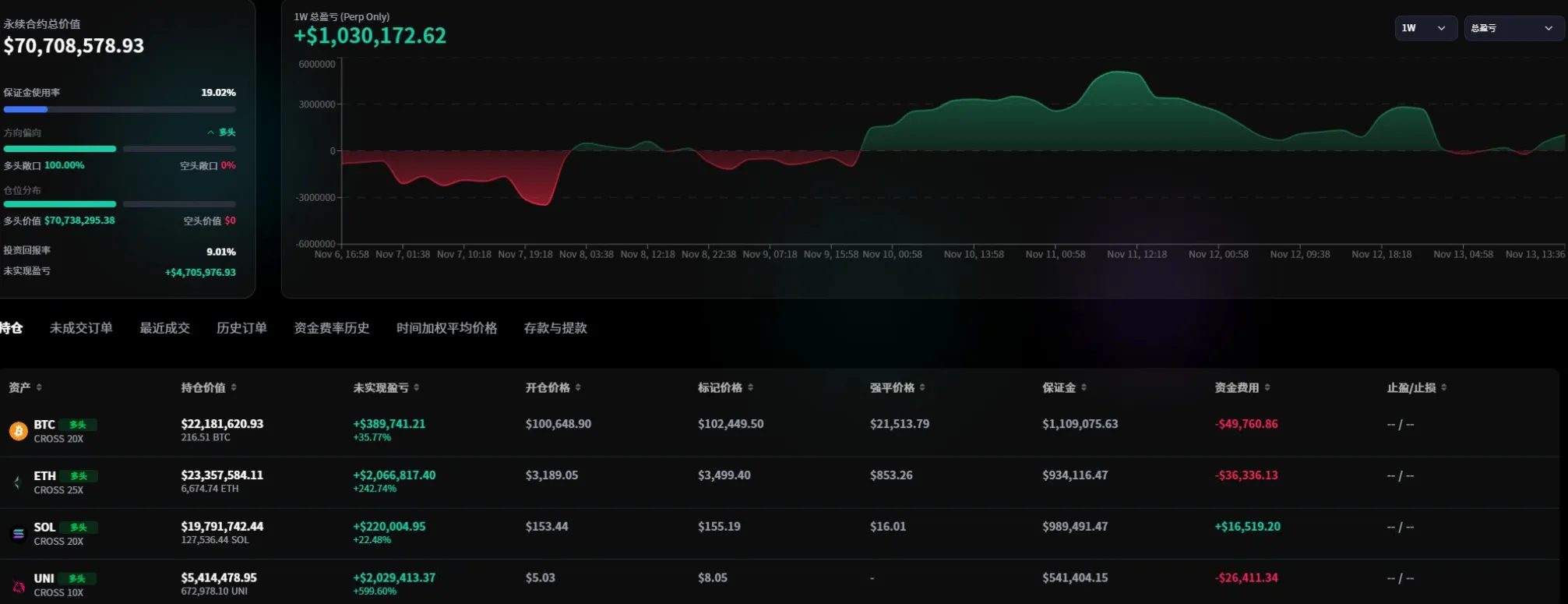
The crypto market is never short of opportunities, but the first wave of gains always belongs to a select few. In cryptocurrency trading, the "pre-market" phase has become a key window for the new generation of traders to compete. To some extent, the market has already initiated trends and movements before the official opening. For individual traders, pre-market strategies often determine two major things: first, whether they can sense the starting point of the market narrative in advance; second, whether they can complete their positioning before mainstream sentiment floods in. Ignoring the pre-market means missing the golden window from seed valuation to explosive growth.
Those who can truly make money in the pre-market only focus on three things:
- How long has it been since the project was launched when you enter? The closer it is to the seed round, the more original the valuation, and the thicker the profit.
- At the moment of opening, can you smoothly offload your position? A shallow pre-market = false breakout, slippage eats into profits.
- Is there someone to back you up if you incur losses? Trial and error without a buffer = high-risk gambling.
This article dissects the pre-market logic of five major platforms: Binance, OKX, Bitget, Gate.io, and LBank, based on on-chain capital flows, publicly available exchange data, and real-world verification, to tell you who is printing money and who is throwing smoke bombs.
Binance & OKX: Stable, but the meat has already been eaten by VCs
Mainstream large exchanges (such as Binance, OKX, and the gradually rising Bitget) generally exhibit a stable and conservative pre-market strategy, leaning towards a "slow burn." They typically focus on listing high-quality large projects, with strict screening to ensure that the coins listed have mature technology and broad recognition. The advantage of this strategy lies in its authority and stability: users believe that most coins listed on these platforms have undergone in-depth due diligence, and extreme situations like "going to zero" or liquidity exhaustion are less likely to occur. Before listing, multiple rounds of financing are usually completed, and institutions and VCs have already positioned themselves. However, this stability also means a lack of exciting incremental narratives, and the pace is relatively slow.
For traders seeking pre-market opportunities, these platforms often struggle to achieve excess returns. When platforms like Binance or OKX announce the listing of a new coin in the pre-market, the project is often already well-known in the industry and may have undergone multiple rounds of financing and valuation increases. Mainstream institutions and VCs may have already positioned themselves, making the price at which retail investors take over at the actual opening very close to the project's fair value or peak. In fact, data shows that among the new coins listed on LBank in 2025, 61% subsequently landed on Binance, but 73% of those coins had LBank users already in profit when they were listed on Binance. This means that for many popular projects, by the time Binance and other major exchanges list them, the profits from the "first wave" of market movements have often been harvested by faster market participants.
This "stable yet lagging" rhythm actually mirrors the overall temperament of the current market. Nowadays, price is the true ultimate arbiter. In an environment where prices fluctuate and confidence wavers, no narrative can maintain strength for long; even previously outstanding privacy sectors are beginning to show signs of fatigue. Take Canton as an example: despite having $100 million in financing, a background resource of 500 million DAT, and backing from top institutions like Yzi Labs, Circle, DTCC, and Goldman Sachs, it even once dropped by half. It has been proven that the market has already entered a "narrative immunity period," and investors' premium responses to concepts and backgrounds are rapidly cooling.
Of course, the pre-market stability strategy of large exchanges also has its rationale: it protects the vast majority of ordinary users from participating in overly early and high-risk gambles. For traders who like to ambush in advance and bet on the starting point of stories, it is difficult to experience the rich returns brought by pre-market positioning on these platforms.
Gate.io: A fast lottery machine, opportunities coexist with noise
In stark contrast to the caution of mainstream large exchanges is Gate.io's aggressive pre-market strategy. The logic of Gate.io can be summarized as "winning by volume": by frequently listing new coins, it provides users with a continuous stream of pre-market opportunities.
However, the loose screening leads to two problems: first, there is a significant disparity in project quality. The low listing threshold on Gate.io mixes high-quality and low-quality projects; second, there is high volatility and low depth. Insufficient pre-market liquidity often results in price distortion, making it prone to collapse after opening. Data shows that 56% of new coins listed on Gate.io experienced a short-term drop of over 20%.
For traders, the pre-market may seem abundant, but in reality, it is noisy and has high screening costs. Gate.io resembles an open experimental field: anyone can participate, but certainty is hard to come by. The advantage is that there are many opportunities, suitable for hunter-type traders; the limitation is instability, making it easy to fall into "illusion."
Some coins may skyrocket immediately upon listing, but they may have issues with insufficient trading depth and extreme volatility; the short-term explosive gains may not be accessible to everyone, and a slight misstep could lead to buying at a high price. Conversely, some new coins may go unnoticed. In other words, Gate.io is like an open experimental field where any project has the chance to take the stage, but filtering out the next "tenfold coin" is not easy, and certainty is low.
Gate.io's pre-market strategy is more like a test of "speed and judgment." It provides countless opportunities for aggressive traders to try new things while testing their screening and stop-loss execution. The only ironclad rule is: no single investment should exceed 2% of total funds; all pre-market activities on Gate.io should be viewed as high-risk gambles.
LBank: Turning the pre-market waiting period into a profit period
LBank Exchange proposed three trading keywords for 2025: fastest coin listing, top depth, and trading compensation.

This strategy targets emerging projects and community-driven meme coin markets, aiming to allow users to participate at the very beginning of hot narratives and reduce risks through extreme listing speed and comprehensive risk control. The above image illustrates LBank's key business directions for 2025, emphasizing innovative measures such as "Pre-Market Guarantee."
In the past year, LBank has also demonstrated astonishing listing speed and achievements. Throughout 2025, the platform has cumulatively listed over 20 high-quality assets, with total trading volume exceeding $50 million, and the highest project return reaching 99 times, with an average yield of 5,072%. This fully validates the logic that "speed equals profit." It is evident that LBank's response speed in capturing market hotspots is not inferior to any competitor.
However, speed alone is not enough. LBank's greater feature lies in the structural optimization of the pre-market trading environment to enhance the quality and sustainability of pre-market trading. First, LBank has established deep liquidity pools specifically for meme and other emerging projects, introducing a market maker mechanism to ensure market depth during the initial trading phase.
They claim that the trading depth of meme coins on the platform ranks first in the industry. They even launched a "Depth Challenge" reward, encouraging users to monitor any meme coins on the LBank platform that do not meet depth standards, with a reward of 200 USDT for verified cases. Ample initial liquidity means that when popular new coins open, the buy and sell orders are substantial, and the price discovery process is smoother. Traders can enter and exit the market smoothly without facing excessive slippage or being unable to execute trades due to a lack of liquidity.
Secondly, LBank's "pre-market compensation" mechanism is considered an industry-first innovative measure (referred to by the platform as Pre-Market Guarantee). When users participate in pre-market trading of new projects on the platform, if the project's price significantly drops below the pre-market buying price after the official opening, the platform will provide users with a price difference compensation to offset the paper losses caused by the drop in opening price. This mechanism effectively shares part of the early trading risk between the platform and users: it reduces the cost of trial and error for users in the pre-market, greatly enhancing their willingness to participate in new projects, thus forming a virtuous cycle of "shared risk → deepened trust → user repurchase."
In fact, projects previously listed on LBank, such as MON, MEGA, and STABLE, all achieved impressive performance during the pre-market phase (with maximum increases of approximately 21 times, 13 times, and 6 times, respectively), and the reason users dared to participate enthusiastically was precisely because of the protection provided by the platform. It can be said that LBank has truly transformed the waiting period before trading into a profit period for traders.
Comparison of platform pre-market strategies: Who can seize the opportunity?
Based on the above analysis, we can compare the pre-market positioning and effectiveness of several major exchanges:

(Note: The "profit space" above refers to the potential for ordinary users to achieve excess returns under different platform pre-market strategies.)
From the table above, it can be seen that Binance is more like "watching the market": it waits for projects to mature before entering, thus being stable but missing early dividends; OKX excels at "calculating the market," focusing on professional analysis and pursuing certain returns under risk control; Bitget is somewhat similar to "going with the flow" or "consuming the market," quickly replicating market trends but lacking unique highlights; Gate.io is obsessed with "testing the market," using a large number of new coins to seek high growth, but the results are mixed; while LBank actively "creates the market," guiding the market through innovative mechanisms, creating trading opportunities and liquidity in the pre-market phase.
Winning in the pre-market, profiting from speed
For individual traders, the significance of pre-market positioning is becoming increasingly clear: the market never rewards hesitation and waiting; it always favors those who are a step ahead. Whether it is Binance's stability, OKX's precision, Bitget's speed, or Gate.io's diverse experimentation, each platform has its own rhythm and followers. However, it can be anticipated that in the next cycle, traders who can grasp the pre-market dividends will hold a greater advantage.
While mainstream platforms are still assessing market trends, opportunities are quietly brewing in the fringe markets; when public sentiment begins to rise, the pioneers may have already reaped substantial rewards. LBank's exploration of combining "speed" and "stability" aligns with this trend: allowing traders to lock in their first wave of market movements before the opening. For players seeking high returns while hoping for relatively controllable risks, this undoubtedly provides a new track worth paying attention to.
免责声明:本文章仅代表作者个人观点,不代表本平台的立场和观点。本文章仅供信息分享,不构成对任何人的任何投资建议。用户与作者之间的任何争议,与本平台无关。如网页中刊载的文章或图片涉及侵权,请提供相关的权利证明和身份证明发送邮件到support@aicoin.com,本平台相关工作人员将会进行核查。



